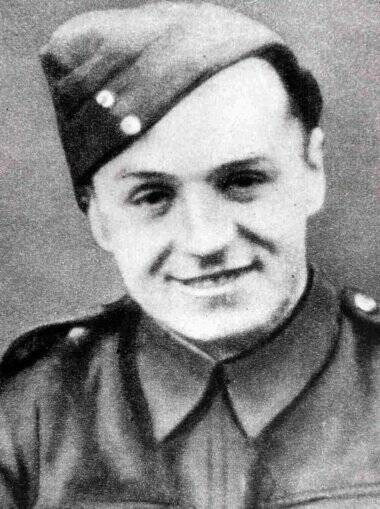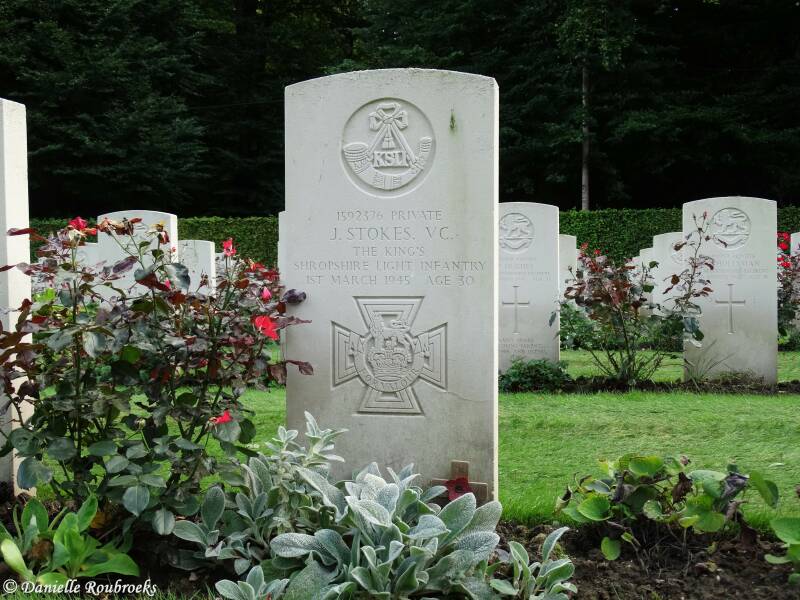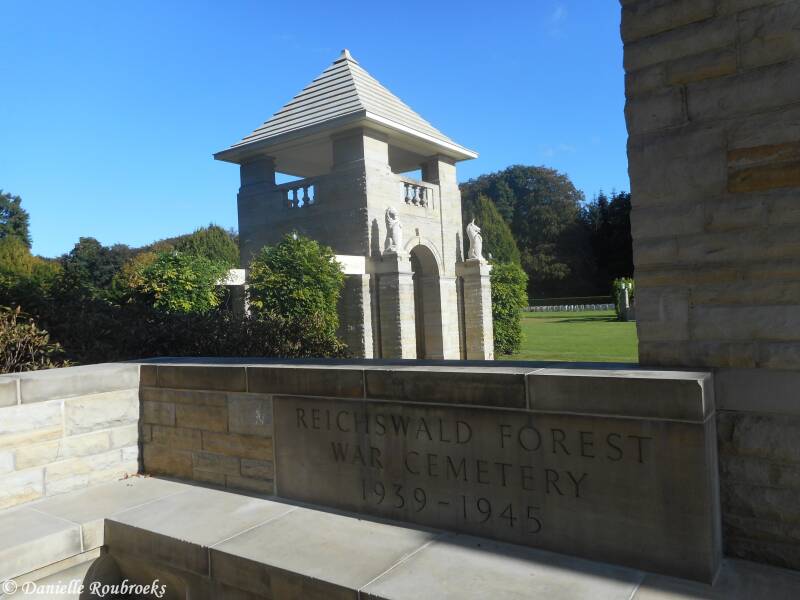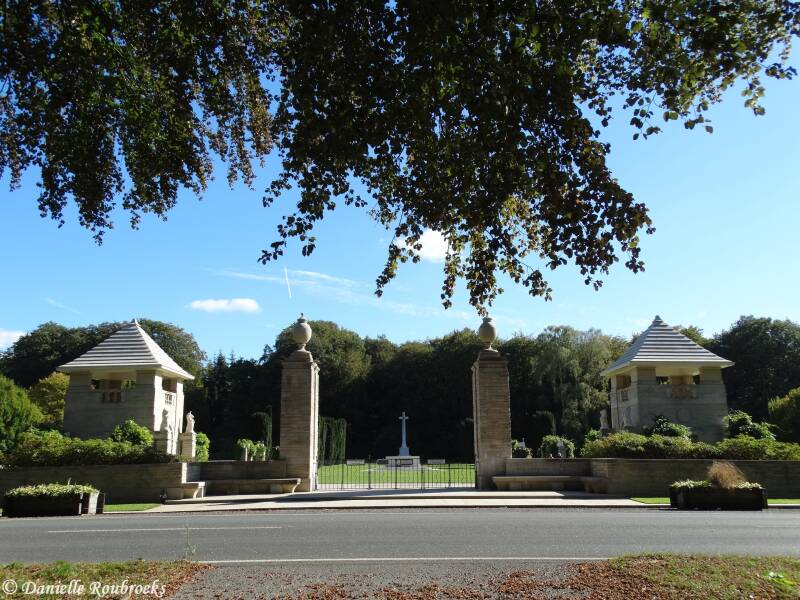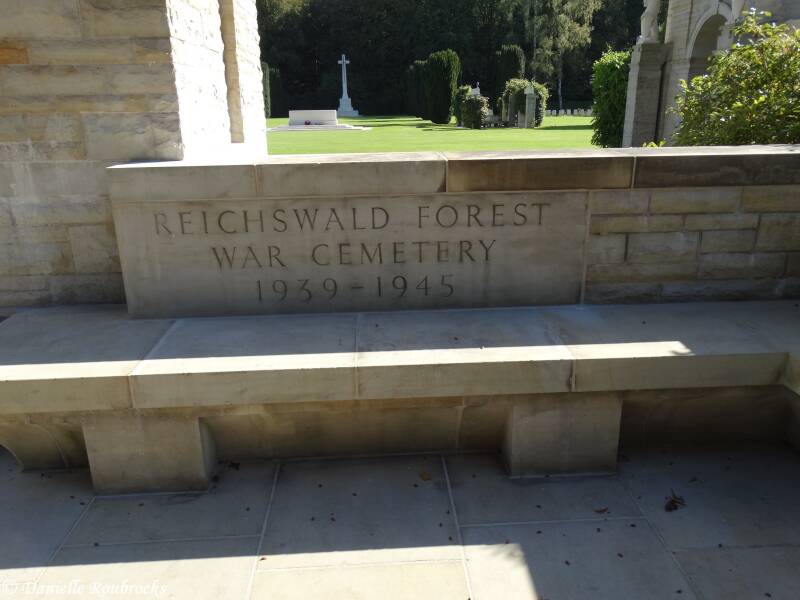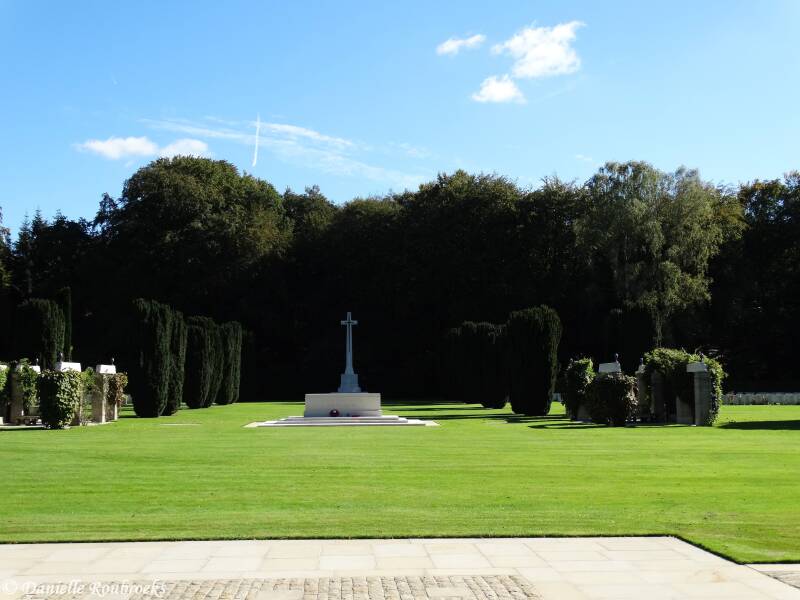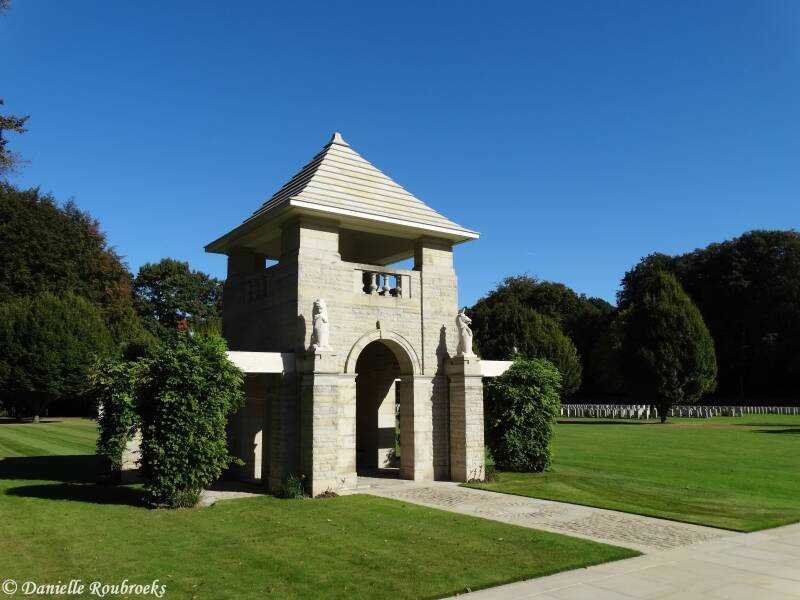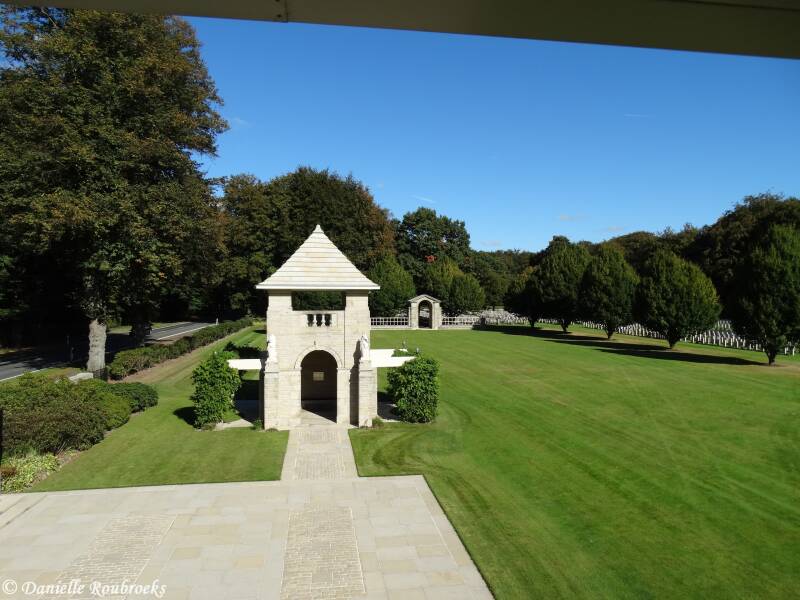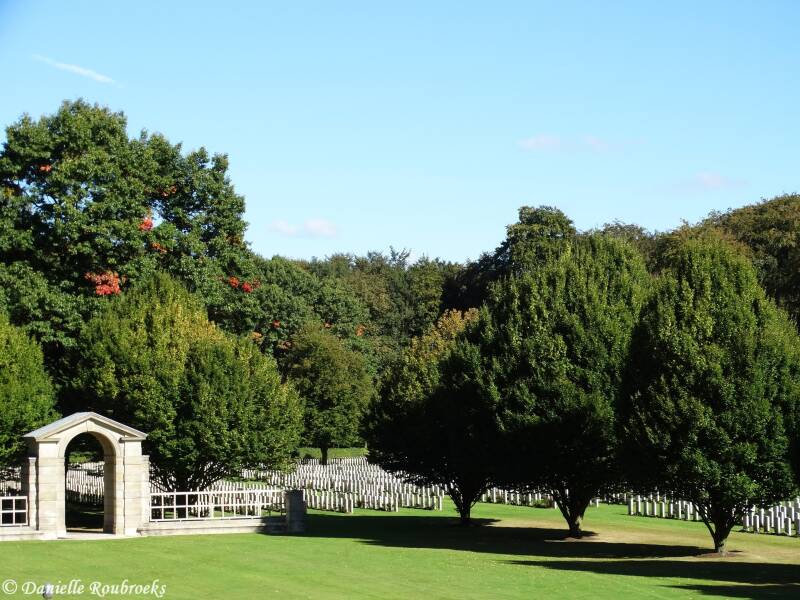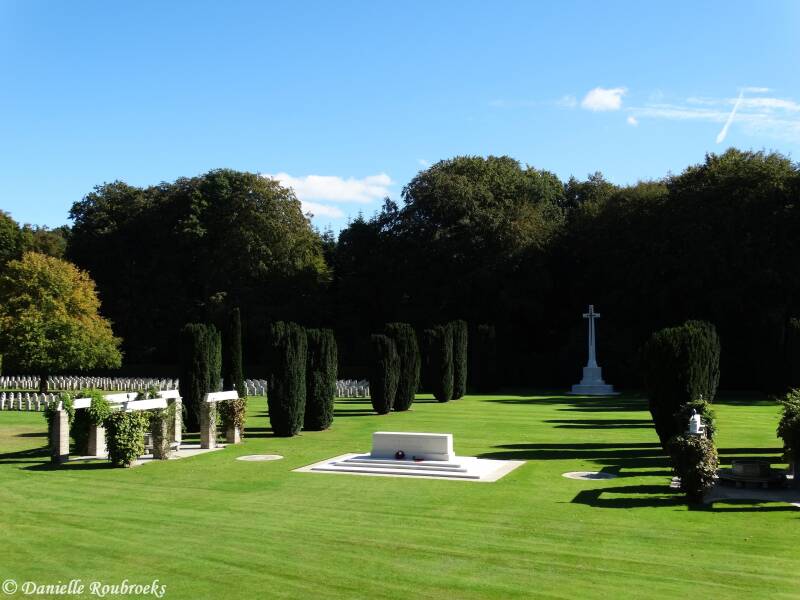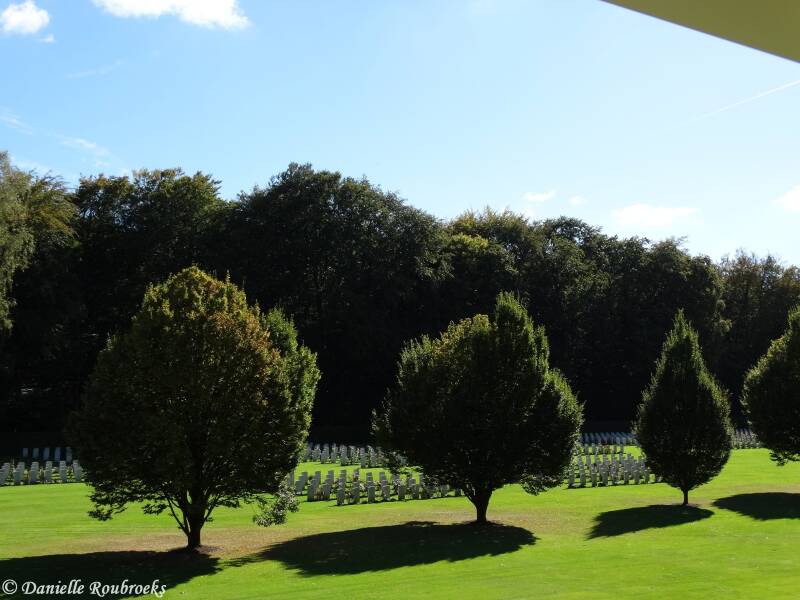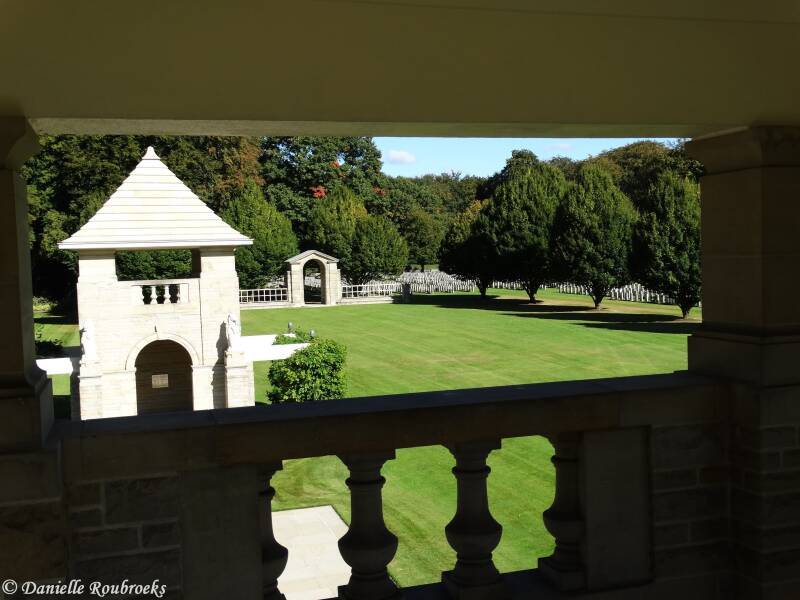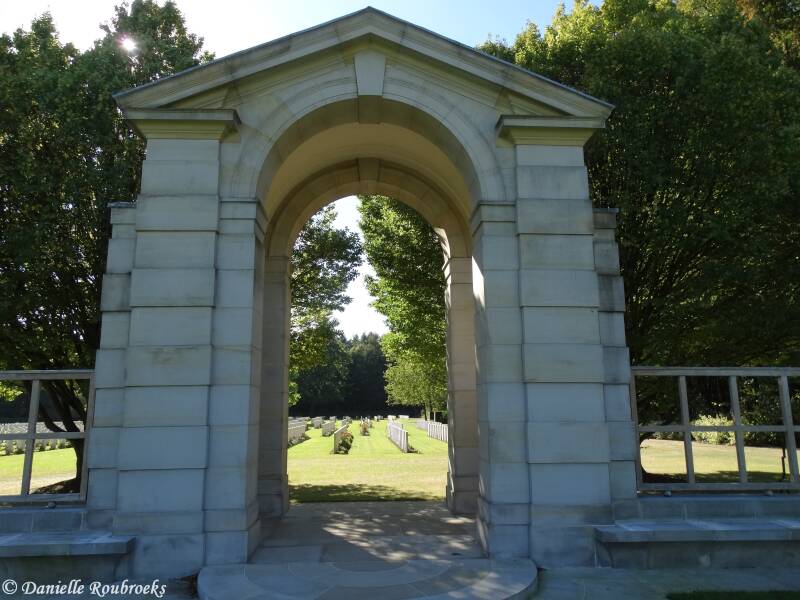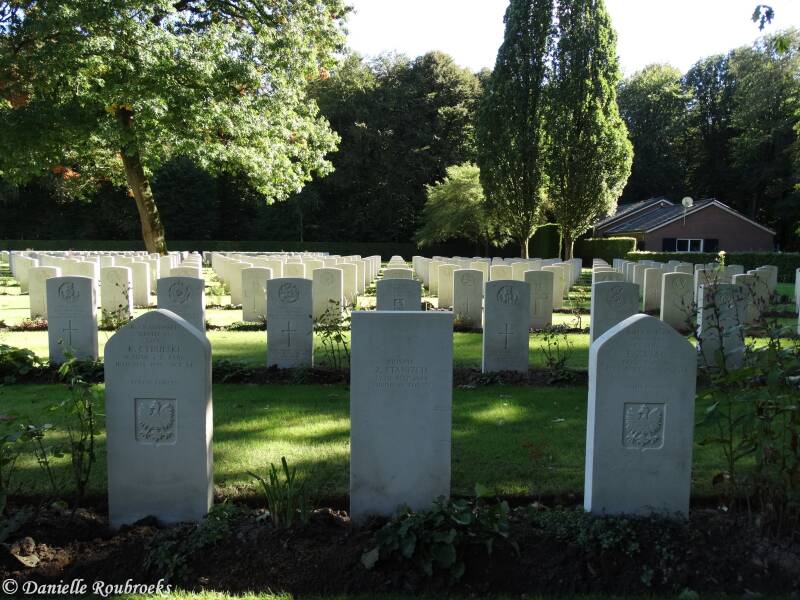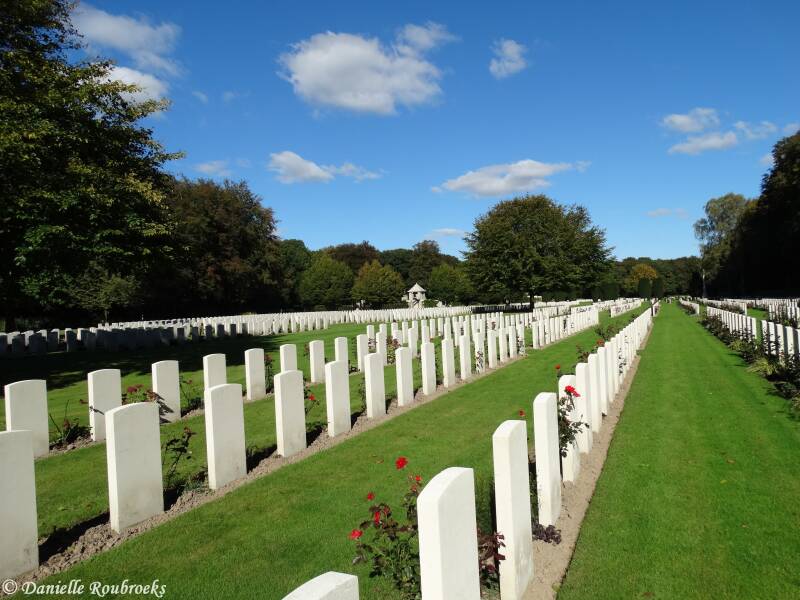Reichswald Forest War Cemetery
Historical Information (Source: CWGC)
Created after the Second World War when burials were brought in from all over western Germany and is the largest Commonwealth cemetery in the country. Some of those members of the land forces buried there died in the advance through Reichswald Forest in February 1945. Others died crossing the Rhine, among them members of the airborne forces whose bodies were brought from Hamminkeln, where landings were made by the 6th Airborne Division from bases in England. Some of the airmen buried in the cemetery lost their lives in supporting the advance into Germany, but most died earlier in the war in the intensive air attacks over Germany. Their graves were brought in from cemeteries and isolated sites in the surrounding area.
There are now 7,594 Commonwealth servicemen of the Second World War buried or commemorated in the cemetery, 176 of them are unidentified. There are also 78 war graves of other nationalities, most of them Polish. Special Memorials to 9 airmen are located at the East boundary wall, near Plot 10. Further Special Memorials to 7 airmen are located within Plot 31, near the Cross of Sacrifice. The cemetery was designed by Philip Hepworth.
Served with
· American (1)
· Australian (327)
· Belgian (1)
· Canadian (705)
· Dutch (1)
· New Zealand (127)
· Norwegian (1)
· Polish (72)
· South African (1)
· United Kingdom (6.264)
Served in
· Air Force (3.915)
· Army (3.564)
· Merchand Navy (1)
· Miscellaneous (2)
· Navy (18)
VICTORIA CROSS
Private James STOKES - 1592376 - 2nd Bn. King's Shropshire Light Infantry
Died 01 March 1945 Age 30
Country of Service: United Kingdom
Awards: Victoria Cross
Citation
The citation in the London Gazette for 13th April, 1945, contains the following details: In Holland, on 1st March, 1945, during an attack on Kerbenheim, Private Stokes was a member of the leading section of a platoon pinned down by heavy fire from a farm building. Without waiting for orders Private Stokes dashed through the enemy fire, to disappear inside this building. The fire stopped, and he reappeared, wounded in the neck. This valiant action enabled the platoon to advance to the next objective. Private Stokes was ordered back to a Regimental Aid Post, but refused to go. The platoon then encountered heavy fire from a house on the left. Again without waiting for orders, Private Stokes rushed the house by himself and all firing from it ceased. His gallantry enabled his platoon, which he subsequently rejoined bringing five prisoners, to continue the advance. In the final assault Private Stokes, now severely wounded, once more dashed to the objective through intense fire. He finally fell, firing his rifle to the last. It was found that he had been wounded eight times in the upper part of the body. Private Stokes's one object throughout this action was to kill the enemy, at whatever personal risk. His magnificent courage, devotion to duty, and splendid example inspired all around him, and ensured the success of the attack at a critical moment; moreover, his self-sacrifice saved his Platoon and Company heavy casualties.
Grave Reference: 62. E. 14.
(Source: Wikipedia)


